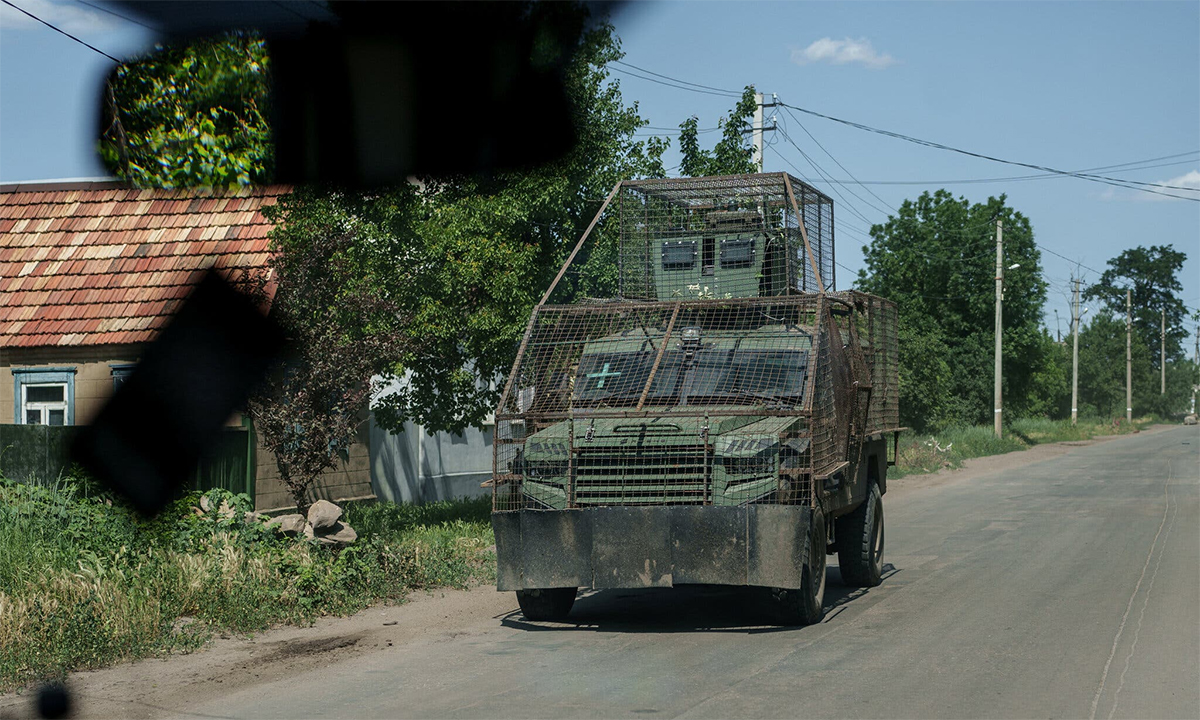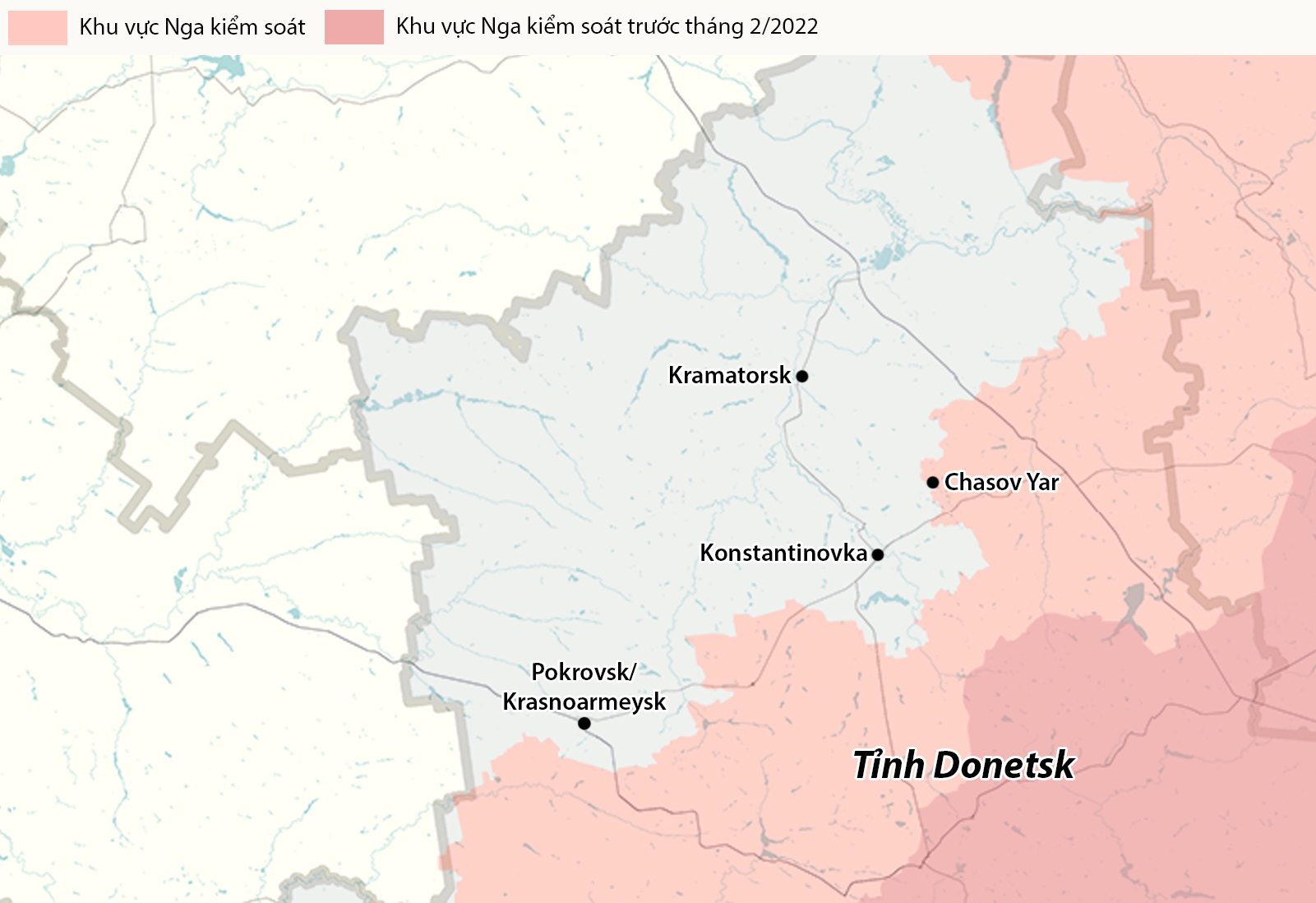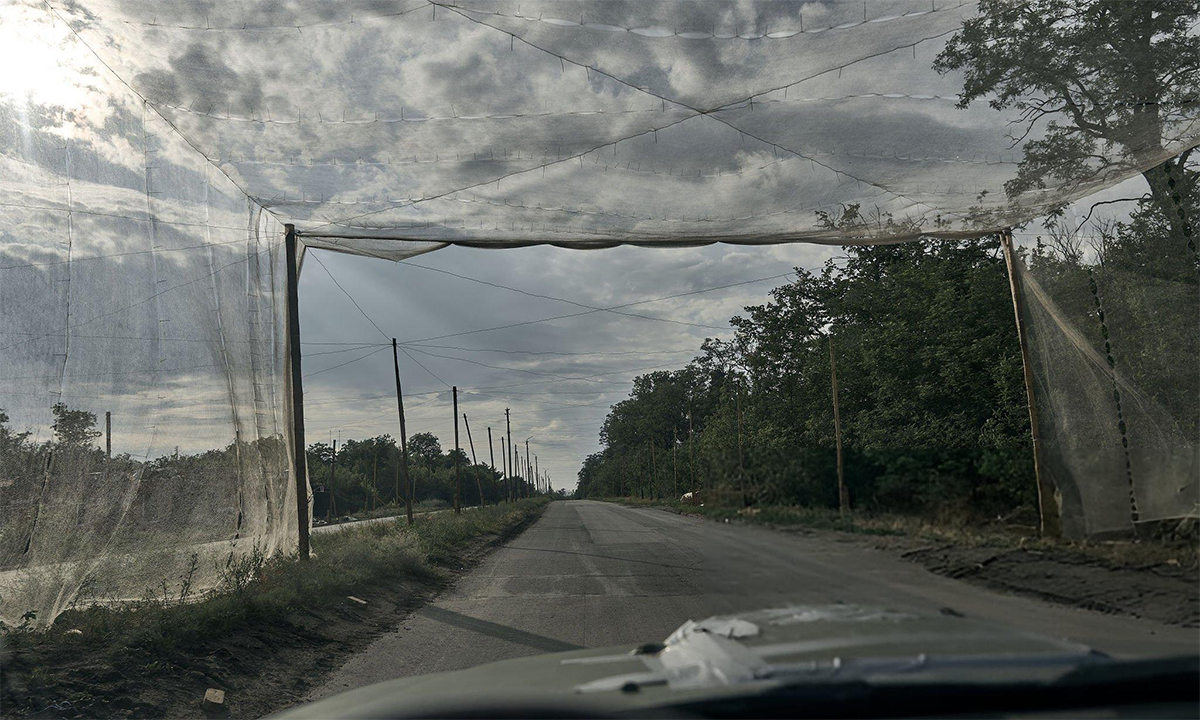Oleh Chausov, a Ukrainian soldier fighting near Konstantinovka in Donetsk province, described being severely wounded in his leg, shoulder, and chest during a May battle. Due to the heavy presence of Russian suicide drones, Chausov’s unit couldn't evacuate him by vehicle.
Instead, they deployed a remote-controlled tracked vehicle, a less likely target for Russian drones. Chausov had to crawl onto the small vehicle, his legs dangling out. 20 minutes later, the vehicle hit a mine and exploded. Chausov survived, crawled out, and hid in a nearby trench.
Chausov's account, along with those of other officers from the 93rd Mechanized Brigade fighting in Konstantinovka, illustrates the dire situation they face defending the city.
 |
Ukrainian armor moves along a road in Konstantinovka, Donetsk province, 11/6. Photo: Reuters |
Ukrainian armor moves along a road in Konstantinovka, Donetsk province, 11/6. Photo: Reuters
Konstantinovka, an industrial city on the Kryvyi Torets River in Donetsk province, was a major iron, steel, zinc, and glass production center during the Soviet era. Its pre-war population of over 67,000 has dwindled to about 15,000.
Positioned at the gateway to Ukraine's last major defense line in Donetsk, Konstantinovka has become a primary target for Russian forces. Its fall would expose towns further north to Russian drone attacks and bring them closer to controlling all of Donetsk.
Russia currently holds about two-thirds of Donetsk province and needs to capture several remaining key cities to achieve full control.
Konstantinovka guards the entrance to Ukraine's final major defensive line in Donetsk. If this stronghold falls, nearly all cities further north will be within range of Russian drone attacks, advancing Moscow's goal of complete control over the province.
Pasi Paroinen, an expert at the Finland-based Black Bird Group, a conflict research organization, says Russia is employing a "half-encirclement" tactic to isolate Konstantinovka and cut off Ukrainian supply lines.
Russian forces are pressing the city from the east, south, and west, leaving only a northwestern escape route. Ukrainian soldiers report constant Russian drone activity targeting positions within a 16 km radius.
This traps soldiers for weeks, preventing rotations for rest or casualty evacuations. "Supplying materials and rotating troops is really difficult," said an officer from the 12th Special Forces Brigade.
 |
Locations of several cities in Donetsk province. Graphic: RYV |
Locations of several cities in Donetsk province. Graphic: RYV
Ukrainian units are bracing for a potential large-scale Russian offensive against Konstantinovka. It remains unclear whether Russia will opt for a direct assault like the 2023 Bakhmut battle or attempt an encirclement to force a retreat, similar to their strategy against Avdeevka early last year.
Ukrainian soldiers acknowledge the unprecedented advantage Russia's drone capabilities provide. "Before, Russia could only hit targets within 2-3 km. Now they can hit and destroy everything within 15 km," said Oleksandr, a drone unit commander in the 93rd Brigade.
When asked about the turning point in Russia's drone operations, Oleksandr and other Ukrainian soldiers point to the Rubikon Center, an elite unit of the Russian Ministry of Defense.
Rubikon previously operated in Kursk province earlier this year, disrupting Ukrainian supply lines and pushing Ukrainian forces back across the border. They were then redeployed to the Konstantinovka front, employing similar logistical disruption and technical support tactics.
"The battlefield changed when the Rubikon Center arrived," admitted an American volunteer medic in a battalion of the 53rd Mechanized Brigade.
This volunteer, operating in Kramatorsk, about 24 km north of Konstantinovka, prepares small antibiotic packages for drones to drop to trapped Ukrainian soldiers. This is often the only way to treat the wounded when evacuation is impossible.
 |
Anti-drone netting deployed by Ukrainian soldiers near Konstantinovka on 16/6. Photo: Libkos |
Anti-drone netting deployed by Ukrainian soldiers near Konstantinovka on 16/6. Photo: Libkos
"I prepare more than needed, as some drones are shot down or crash due to enemy jamming. Sometimes I have to repackage everything because drones fall on the way to the pickup point," the American volunteer said.
Russian attacks around Konstantinovka are so frequent that Ukrainian soldiers rarely leave their dugouts. "We joke that going to the bathroom is now an act of heroism," said Mykola, a soldier fighting southeast of the city.
Vadym Filashkin, the Ukrainian-appointed governor of Donetsk, last month urged residents to evacuate Konstantinovka, calling it a matter of life and death. The roads leading to the city are littered with burnt-out vehicles, and Ukrainian soldiers have strung nets across many routes to deter drone attacks.
Chausov, now recovering in western Ukraine, isn't sure how he escaped Konstantinovka. "There are too many drones there. It's a nightmare," he said.
Nguyen Tien (According to Yahoo News, AFP, AP)












